Icing Setup
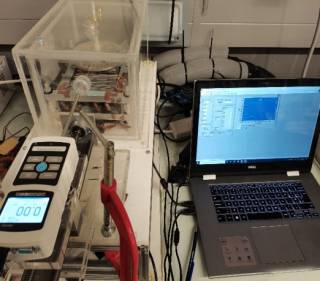
Icing setup is used for testing ice adhesion on surfaces at -25℃. It consists of a transparent double-wall container, an aluminium frame, a base plate, a compact heat exchanger (P1805368, UK Exchangers), 4 axial fans, situated below the heat exchanger (ARX CeraDyna Series, RS Components), a rotary aluminium stage, a plastic shaft and two Peltier cooling modules located between the aluminium stage and the heat exchanger.
Condensation Setup
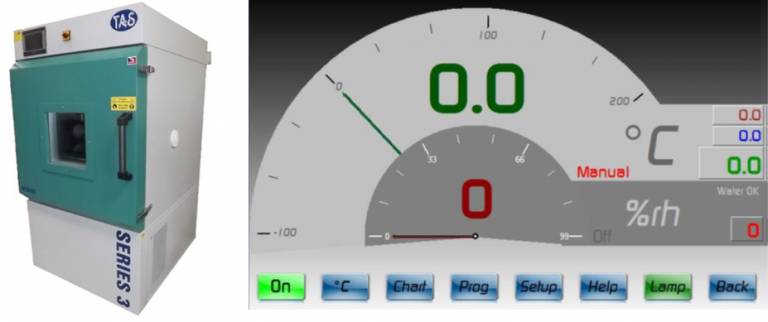
LTCL 400 (TAS UK LTD) is an environmental chamber for phase change processes. It consists of a fully seam welded stainless steel inner chamber and is enclosed in a mild steel outer shell. Between the two is a layer of mineral fibre and foam insulation. A fully-hermetic air cooled refrigeration system is used to lower the temperature of the inner chamber where the refrigerant is being passed through a finned evaporator coil located at the rear of the chamber behind an air baffle system. The refrigeration plant is located in the lower compartment of the chamber and exhausts warm air to the BACK of the machine. Heating of the chamber is affected by Inconnel sheathed heater elements located behind the baffle system. Humidification is generated by injecting air into a hot water bath and subsequently into the chamber working area. De-humidification is achieved by the use of a ‘dew point’ coil with anti-icing features. Temperature sensing is performed via PRT100 thermometers and Humidity sensing is done via a solid state sensor.
Discovery Hybrid Rheometer (DHR)
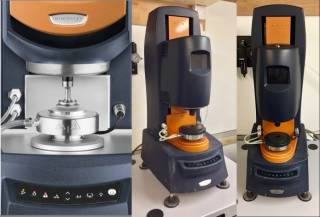
Advances in core measurement technology enable more sensitive measurements with superior precision. This empowers scientists to measure lower viscosities and track weaker liquid and soft-solid structure, while consuming less material. DHR performs stress and strain-controlled measurement with high-speed electronics and the responsive Advanced Drag Cup Motor, providing the fastest transient responses and accurate control in any type of deformation. Direct Strain oscillation provides real-time strain control at every point of the oscillatory measurement. Responsive strain control ensures rapid data collection and the highest data quality, particularly when evaluating materials that show a non-linear response at very large amplitudes or undergoing transitions. DHRs benefit from Magnetic Thrust Bearing, which reduces basic system friction by 70% compared to traditional designs and therefore lower torques can be measured reliably and accurately.
3D Microscope (Digital Microscope VHX-7000)
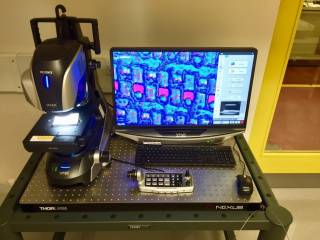
The VHX series, world's first 4K Ultra-High accuracy microscope, offers observation that exceeds conventional imaging tools. The VHX Series is equipped with all the features needed to enhance imaging. Even when the target has an uneven surface, a fully-focused image is obtained instantly, composed of multiple images with varying focus positions, providing a 3D display to observe surface contours as well. Its easy-to-use interface can be used effectively by expert and novice users. All adjustments including XYZ, magnification, focus, and light settings are controlled automatically such that the user simply places the target on the stage, and everything else is fully automatic requiring minimum intervention from the user.
Wettability Setup

Contact angle measurement of droplets is based on a custom made goniometer setup. The setup consists of an adjustable stage, a syringe pump, a light source, and a CMOS camera. Videos of the droplet during advancing and receding phases are analysed with a MATLAB code for measuring the contact angles and the hysteresis.
High Resolution 3D Printing Setup
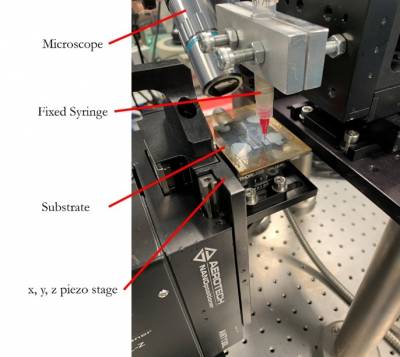
3D printing is a layer-by-layer deposition of ink from the nozzle and syringe. The extruded droplets retain their shape and form a pattern on the substrate. This 3D printer has high flexibility with regards to pattern complexity, ease of programming (G-Code), high spatial resolution (~ micrometers), printing speed (mm/min − m/min), and printing pressure.
 Close
Close

